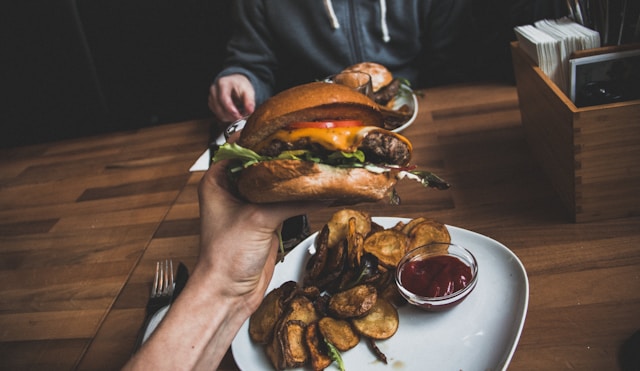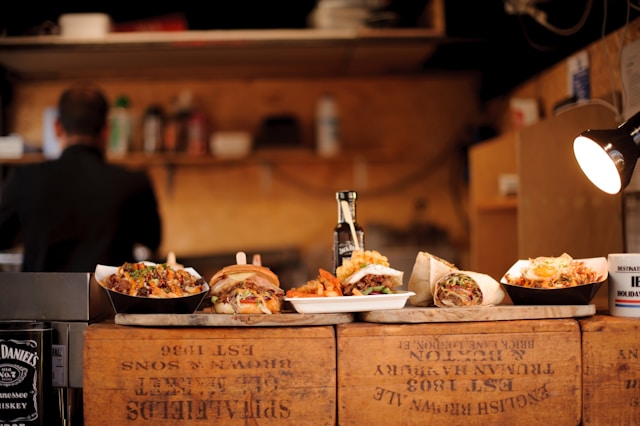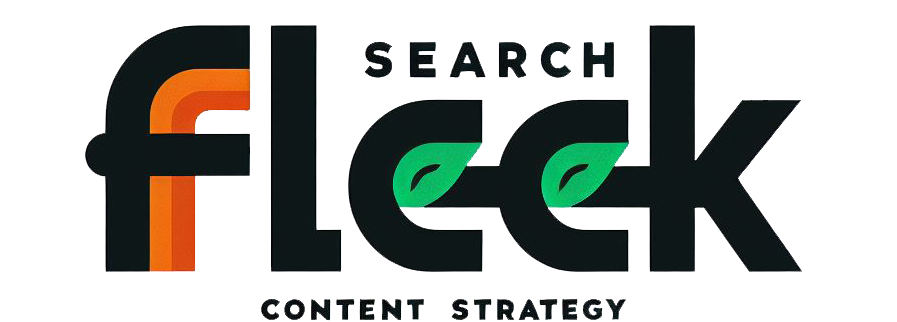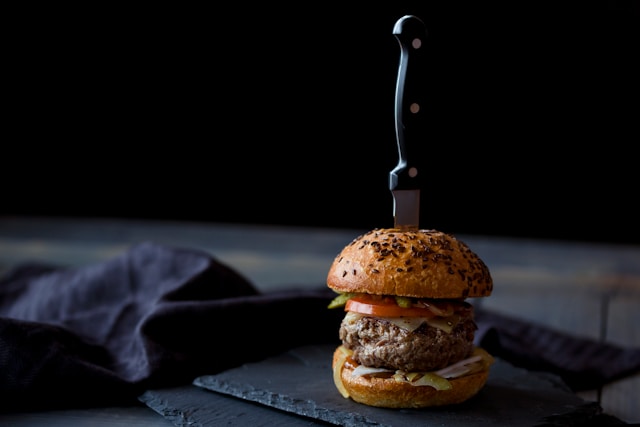The world of food blogging is a vibrant space filled with culinary creativity and passionate storytellers. But with so many food blogs competing for attention, how do you make yours stand out and turn your love for food into a thriving online business? This comprehensive guide will equip you with the knowledge and strategies to build a successful food blog, from finding your niche to generating income.
Finding Your Foodie Niche
The food blogosphere is vast and diverse. Before diving in, it’s crucial to identify your unique voice and target audience.
Understanding the Competitive Landscape
Food blogging is a popular niche, so understanding the competition is essential. Explore popular food blogs and identify trends, popular cuisines, and potential gaps in the market. This research will help you carve out your own space and attract a dedicated audience.
Here are some popular food blog niches:
- Global Cuisines: Specializing in a specific region’s cuisine, like Thai street food or French pastries.
- Dietary Restrictions: Catering to audiences with specific needs, such as vegan, gluten-free, or paleo recipes.
- Budget-Friendly Cooking: Focusing on delicious and affordable meals for home cooks on a tight budget.
- Baking and Desserts: Showcasing your expertise in creating delectable sweet treats.
- Quick and Easy Meals: Providing solutions for busy individuals and families with time-saving recipes.
Discovering Your Unique Voice and Audience
While researching existing blogs is helpful, it’s equally important to define your own niche and voice. Here are some exercises to help you brainstorm:
- Personal Interests: What kind of food excites you? Do you have a passion for regional cuisines, historical recipes, or innovative culinary techniques?
- Skills and Expertise: Are you a baking aficionado or a master at creating healthy, weeknight meals? Highlight your strengths and areas of knowledge.
- Target Audience: Who do you envision reading your blog? Consider demographics, dietary needs, and cooking experience levels.
Once you have a clearer picture of your niche and target audience, you can move on to crafting a memorable brand identity.
Building Your Food Blog’s Foundation

With a clear direction, it’s time to build the technical foundation for your food blog. Here, we’ll delve into choosing the right platform, securing your domain name and hosting, and designing a user-friendly website.
Choosing the Right Platform
There are numerous platforms available for creating a food blog, each with its own advantages and limitations. Here are some popular options to consider:
- WordPress.org: A self-hosted platform offering maximum control, flexibility, and customization options. However, it requires some technical knowledge for setup and maintenance.
- Blogger: A free platform owned by Google, known for its ease of use and user-friendly interface. However, customization options are limited compared to self-hosted platforms.
- Squarespace: A popular website builder offering beautiful templates and drag-and-drop functionality. It’s good for beginners but may not be as scalable as WordPress.
Factors to Consider When Choosing a Platform:
- Ease of Use: If you’re new to blogging, consider a platform with a user-friendly interface like Blogger or Squarespace.
- Customization Options: If you want complete control over the branding and design of your blog, a self-hosted platform like WordPress.org is ideal.
- Scalability: If you plan to grow your blog significantly in the future, choose a platform that can accommodate your needs.
Securing Your Domain Name and Hosting
- Domain Name: This is your blog’s web address, so choose a name that is catchy, memorable, and reflects your brand identity. It’s recommended to keep it short, easy to spell, and relevant to your niche.
- Web Hosting: This is the service that stores your website’s files and makes it accessible online. There are many reliable web hosting providers available, offering various plans at different price points.
Recommended Resources:
- Domain Registrars: Google Domains, Namecheap, GoDaddy
- Web Hosting Providers: Bluehost, SiteGround, DreamHost
Designing a User-Friendly and Appealing Blog
The visual appeal and user experience of your blog are crucial for keeping visitors engaged.
- Choosing a Theme: Select a theme that complements your brand identity and prioritizes mobile responsiveness. Mobile-friendly design ensures your blog looks great and functions seamlessly on all devices.
- Creating Essential Pages: Set up key pages like “About Me,” “Contact,” and a “Recipe Index” to make it easy for visitors to find information and connect with you.
- Optimizing Navigation: Ensure clear and intuitive navigation menus that allow users to find specific recipes or content categories effortlessly.
Crafting Compelling Food Content
Now comes the heart of your food blog: the content itself. Here, we’ll explore strategies for developing a content calendar, writing mouthwatering recipes, and expanding your repertoire beyond just recipes.
Developing a Content Calendar
Consistency is key to building a loyal audience. Having a content calendar helps you plan and schedule engaging content in advance, ensuring a steady stream of new recipes and blog posts.
- Balancing Recipe Variety with Audience Interest: Consider your target audience and their preferences. While variety is essential, ensure a good balance between popular recipe categories and unique dishes to keep them coming back for more.
- Integrating Seasonal and Trending Food Topics: Incorporate seasonal ingredients and capitalize on trending food topics to keep your content fresh and relevant. For example, explore summer grilling recipes during barbecue season or pumpkin spice delights in the fall.
- Creating a Consistent Publishing Schedule: Establish a consistent publishing schedule, whether it’s daily, weekly, or bi-weekly. This helps your audience know when to expect new content and builds anticipation.
Writing Mouthwatering Recipes
Your recipes are the cornerstone of your food blog. Here’s how to write clear, enticing, and user-friendly recipes:
- Structure and Format: Ensure a clear and easy-to-follow structure. Include a catchy recipe title, an enticing description, a list of ingredients with precise measurements, and step-by-step instructions with clear explanations.
- Using Storytelling and Personal Anecdotes: Weave personal stories and anecdotes into your recipes to connect with your audience on a deeper level. Share the inspiration behind the dish, family traditions, or memories associated with the recipe.
- Optimizing Recipes for Searchability and User Experience: Use relevant keywords in your recipe titles and descriptions to improve search engine optimization (SEO). Break down instructions into manageable steps and include clear measurements (cups, tablespoons, etc.). Offer variations and substitutions for common ingredients to cater to different dietary needs and preferences.
Beyond Recipes: Expanding Your Content Repertoire
While recipes are a vital part of any food blog, there’s a whole world of content you can explore to keep your audience engaged:
- Restaurant Reviews and Recommendations: Share your experiences dining out, highlighting hidden gems, popular restaurants, or specific dishes you recommend.
- Kitchen Equipment Guides and Reviews: Review kitchen gadgets, tools, and appliances to help your audience navigate the world of cookware and choose the right equipment for their needs.
- Tips and Tricks for Meal Prepping, Budgeting, and Healthy Cooking: Offer practical tips and tricks for planning meals, saving money on groceries, and creating healthy and delicious dishes.
- Travel-Inspired Cuisine and Cultural Food Experiences: Share your culinary adventures from your travels, showcasing regional dishes, cooking classes you’ve attended, or unique ingredients you’ve discovered.
By offering a variety of content formats, you cater to different interests within your audience and establish yourself as a well-rounded food resource.
Mastering Food Photography

High-quality food photography is essential for captivating your audience and making your recipes truly mouthwatering. Here’s a breakdown of the essentials:
Essential Equipment
- Camera Basics: While fancy equipment is great, you can start with a good smartphone camera. Invest in a tripod for stability and consider purchasing a light diffuser to create softer lighting.
- Natural Lighting vs. Artificial Lighting Setups: Natural light is generally preferred for food photography. However, you can create beautiful images using artificial lighting setups as well. Experiment to find what works best for you.
Capturing Drool-worthy Images
- Taking High-Quality Photos: Focus on composition, lighting, and styling to showcase your dishes in the best light. Experiment with different angles and backdrops to create visually appealing photographs.
- Editing Basics: Basic photo editing can enhance your images significantly. Learn how to adjust contrast, color correction, and cropping to create professional-looking results. Free and paid editing tools are readily available.
- Importance of Consistent Visual Style: Develop a consistent visual style for your photos across your website and social media platforms. This creates a recognizable brand identity for your food blog.
Promoting Your Food Blog for Success
Once you’ve got great content and stunning visuals, it’s time to get your food blog out there and build an audience. Here are some key strategies for promoting your blog:
Search Engine Optimization (SEO)
SEO helps your blog rank higher in search engine results, making it easier for potential readers to discover you.
- Keyword Research and Targeting: Research relevant keywords related to your recipes and food niche. Integrate those keywords naturally throughout your content, including titles, descriptions, and blog posts.
- Optimizing Meta Descriptions and Title Tags: Write clear and concise meta descriptions and title tags for your recipes and blog posts
- Optimizing Meta Descriptions and Title Tags (Continued): These snippets appear in search engine results and should be enticing enough to encourage users to click.
- Building Backlinks: Backlinks are links from other websites to your blog. Earning backlinks from high-quality websites improves your blog’s authority and ranking in search results. You can build backlinks through guest posting on relevant websites, collaborating with other food bloggers, and participating in online communities.
Social Media Marketing
Social media is a powerful tool for connecting with your audience, promoting your content, and driving traffic to your blog.
- Identifying the Social Media Platforms Where Your Audience Resides: Focus your efforts on platforms where your target audience spends their time. Popular options for food bloggers include Instagram (highly visual platform), Pinterest (recipe discovery platform), Facebook (for building a community), and Twitter (for quick updates and food trends).
- Creating Engaging Content for Each Platform: Tailor your content to each platform’s strengths. Utilize stunning food photos on Instagram, create visually appealing recipe pins for Pinterest, share longer blog posts and engage in discussions on Facebook, and use Twitter for quick recipe snippets and food trends.
- Utilizing Social Media Stories and Highlights: Social media stories offer a fun and interactive way to connect with your audience. Share behind-the-scenes glimpses of recipe creation, grocery shopping adventures, or kitchen mishaps. Highlight your most popular stories for easy access on your profile.
Building an Email List
Building an email list allows you to connect with your audience directly and promote your latest recipes, blog posts, and special offers.
- Offering Valuable Incentives for Subscribing: Encourage new visitors to subscribe to your email list by offering valuable incentives, such as exclusive recipes, downloadable recipe e-books, discount codes, or access to subscriber-only content.
- Segmenting Your Email List for Targeted Marketing Campaigns: Segment your email list based on subscriber interests or dietary preferences to send more relevant and personalized content. This increases engagement and conversion rates.
- Creating Engaging Email Newsletters with Valuable Content: Don’t just bombard your subscribers with promotional emails. Create engaging newsletters that offer valuable content, like recipe roundups, seasonal cooking tips, or exclusive kitchen hacks. Balance promotion with informative and entertaining content.
By implementing a combination of these strategies, you can effectively promote your food blog, reach a wider audience, and build a loyal following.
Monetizing Your Food Blog: Turning Passion into Profit
Now that you’ve established a successful food blog with a dedicated audience, it’s time to explore ways to turn your passion into profit. Here are some popular revenue streams to consider:
Exploring Various Revenue Streams
- Display Advertising: Partner with ad networks to display targeted ads on your blog. When readers click on these ads, you earn a commission.
- Affiliate Marketing: Promote relevant food-related products and earn commissions on sales generated through your affiliate links. Ensure the products you promote align with your brand identity and offer value to your audience.
- Selling Digital Products: Create and sell valuable digital products like e-cookbooks, meal plans, or premium recipe collections. These can offer in-depth content, exclusive recipes, and helpful resources to supplement your blog content.
Building Brand Partnerships
- Sponsored Content and Brand Deals: Collaborate with food brands to create sponsored content that aligns with your brand identity. This could involve recipe development using their products, product reviews, or hosting food photography challenges.
- Product Reviews and Sponsored Giveaways: Partner with brands to offer product reviews and giveaways on your blog. This is a win-win situation, as you get to test and review products while offering your audience a chance to win exciting prizes.
Building a Community and Premium Services
- Offering Online Cooking Classes: Host live or pre-recorded online cooking classes for a paid audience. This allows you to share your expertise in a more interactive format and create a new revenue stream.
- Creating a Membership Program: Provide exclusive content, downloadable resources, and community access for paying members. This could include bonus recipes, personalized meal plans, access to live Q&A sessions, or a members-only forum.
- Food Consulting and Brand Development: Leverage your expertise to offer consulting services to restaurants or food businesses. This could involve menu development, recipe creation, food styling for photography, or brand development assistance.
Growing and Scaling Your Food Blog
Building a successful food blog takes time, effort, and continuous learning. Here are some key strategies to keep in mind for long-term growth:
Analyzing Your Traffic and Engagement
- Using Analytics Tools: Track your website traffic and audience engagement using analytics tools like
- Using Analytics Tools: Track your website traffic and audience engagement using analytics tools like Google Analytics. These tools provide valuable data on demographics, popular content, traffic sources, and user behavior. Analyze this data regularly to understand your audience better and identify areas for improvement.
- Identifying Areas for Improvement and Tailoring Content Strategy Based on Data: Based on your analytics data, you can see what kind of content resonates most with your audience and what topics might need further exploration. This data-driven approach helps you tailor your content strategy to cater to your audience’s needs and preferences.
Building Relationships and Collaboration
- Networking with Other Food Bloggers and Influencers: Connect with other food bloggers and influencers in your niche. Collaborate on guest posts, participate in online challenges, or host joint webinars. Building relationships within the food blogging community allows you to expand your reach and tap into new audiences.
- Guest Posting on Relevant Websites: Guest posting on websites with a target audience similar to yours allows you to showcase your expertise, reach a wider audience, and potentially earn backlinks to your blog.
- Participating in Online Food Communities and Forums: Engage with online food communities and forums. Answer questions, share recipes, and participate in discussions. This demonstrates your expertise, builds credibility, and allows you to connect with a passionate audience.
Staying Ahead of the Curve
The food blogging landscape is constantly evolving. Here are some tips to ensure your blog remains relevant and engaging:
- Following Food Trends and Incorporating Them into Your Content: Stay updated on the latest food trends and culinary innovations. Explore popular ingredients, cooking techniques, or global cuisines and incorporate them into your content.
- Experimenting with New Content Formats: Don’t limit yourself to just recipes. Experiment with new content formats like video recipes, live streaming cooking demonstrations, or food podcasts.
- Continually Learning and Improving Your Skills in Photography, Writing, and Marketing: Invest in self-improvement. Take online courses, watch tutorials, and read industry blogs to enhance your photography skills, writing technique, and marketing knowledge.
By constantly learning, adapting, and creating valuable content, you can ensure your food blog remains a thriving platform for years to come.
Conclusion: The Recipe for Food Blog Success
Building a successful food blog is a delicious journey that combines passion, creativity, and strategic planning. Remember, consistency, high-quality content, and audience engagement are key ingredients for success. Embrace the learning curve, keep experimenting, and most importantly, have fun sharing your love for food with the world.
Looking Forward: The Future of Food Blogging
The future of food blogging is bright! With the rise of social media platforms and the increasing popularity of online cooking resources, food blogs will continue to play a significant role in inspiring home cooks and shaping culinary trends. As technology evolves, we might see even more integration of video content, interactive experiences, and personalized content delivery. The key to success will remain the same: creating valuable content that resonates with your audience and fuels their passion for food.
Emon Anam, CEO of Search Fleek, isn't your typical digital guru. He brings a unique blend of financial expertise (former banking pro!) and digital marketing mastery to the table. A self-proclaimed "SEO Sherlock Holmes," Emon unlocks content secrets for local businesses and SaaS companies. But beyond the keyboard, he's a devoted family man, music enthusiast, and cricket champion. Let Emon weave your digital success story!
AI Writing Disclaimer
This post was initially researched and outlined by me. The content was then generated by an AI language model using the provided information. The final text has been reviewed and edited by me for accuracy and clarity.




